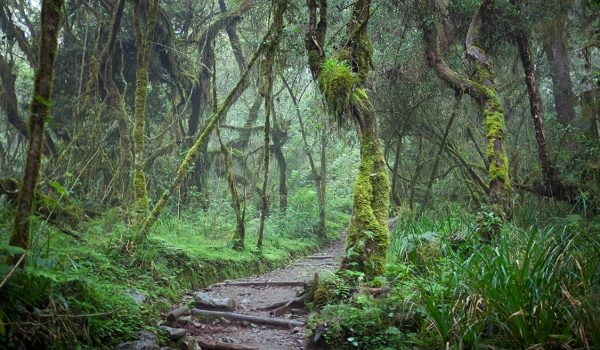MOUNT KILIMANJARO.
Mount Kilimanjaro is Africa highest mountain (5,895 meters). To be in its presence either near of far, and to see the granular of its giant dome tower so far, far up into the sky above the surrounding plains is one of life’s travel experience. You can but gaze at it in wonder and awe inspiring and feel deeply humbled by the sheer magnificent of it. These is why many travelers want to get there, embrace it, climb it.
It is a volcano and rises alone out of an expensive landscape of hills and plains that are level. This makes it the world’s highest free standing mountain as measured from the surrounding plains to its summit.
Five eco-climatic zones take you to the equivalent of a trip from the equator to the arctic in a brief tour. As one climb Kilimanjaro, vegetation and weather changes in response to the changing elevation
- Cultivated Zone.
- Rain Forest.
- Heath / Moorland Zone.
- Alpine Desert.
- Arctic Region.
History.
Kilimanjaro becomes a national park in 1973 and a world heritage site in 1987. The Mountain originally comprised 3 volcanoes Kibo, Mawenzi, and Shira that were formed about 1 million years ago. Mawenzi since erupting and Shira collapsed while Kibo continued erupting until about 150,000—200,000 years ago and still technically only dormant. The very highest point was named Uhuru point after Tanzania’s independence in 1961
Wildlife.
There is a possibility of seeing wildlife while on your climb to Kilimanjaro, as there is a lot of it in the forest and moorlands including elephants, buffaloes, leopard, warthog, bush pig, bushbuck, and several species of monkeys and lots of birds.
Getting there.
- Air
Kilimanjaro airport is the international entry point to the country and a drive to Arusha / Moshi is approximately one hour
- Road
There is a good tarmac road to the entry point from both Arusha/Mosh and the distance from Kilimanjaro to the park headquarters in Marangu is 86 Kilometers, though a section of the road to the starting point of Lemosho and Rongai route is not tarmacked.
The climb
All adults of normal health and fitness should be able to make it to the top without needing specialist equipment, warm, weatherproof clothing, and sound footwear are essential. Of critical importance are patience and determination. Climbers are advised to add days for acclimatization and always walk slow, remember the Swahili word pole- pole.
There is so much more to Kilimanjaro than the summit. Your hike will take you through lush forest to a moorland zone with giant heather and lobelias, and then on up through alpine montane desert, and upon still further to an Arctic landscape of ice snow and rock and without vegetation. And here on the roof of Africa in clear weather, the views are spellbinding. Mount Meru, the Great Rift Valley, and the Maasai steppe all lie there below you.
Accommodation.
Arusha and Moshi towns are where most climbers stay before their climb and there is a host of hotels, hostels, and lodges that care for them including some at the entry and exit gates. On the Mountain itself, the different routes have their specific places to overnight and the accommodation ranges from a well-appointed hut on the Marangu route to camping on the ground where you pitch your own tent.
Safari ideas.
Climbing Kilimanjaro fits in well with a safari to the rest of Tanzania, and indeed great wildlife areas are accessible, if all is planned well Tarangire, Lake Manyara, and Ngorongoro are within a day drive from Arusha but for a maximum game, viewing give at least six days if you have time and resources, while for Mukomazi is within a day drive from Mosh and is 126 kilometers to the entry point and here give 2—3 days for maximum game viewing.




